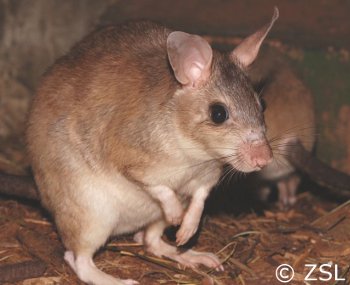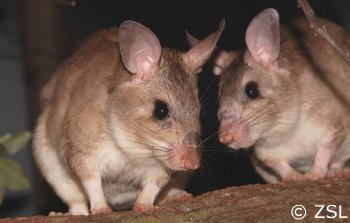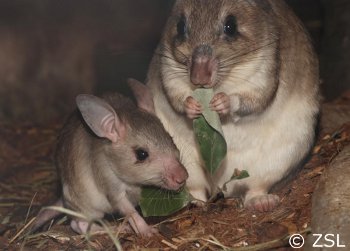A few weeks ago in February, two new Malagasy giant jumping rats (Hypogeomys antimena) were born at London Zoo. This is the desired result of a captive breeding programme set up in 1990 by the Durrell Wildlife Conservation Trust, and now there are more than 50 giant jumping rats in twelve different institutions throughout the world.

Endemic only to Madagascar, the giant jumping rats have long pointed ears and long hind feet, almost resembling rabbits. They weigh on average around 1.5 kilograms; although fossil evidence shows that the rats once had a much larger but now extinct relative. The giant jumping rats usually move around on all fours, although they can hop on their hind legs and jump up to a metre into the air when faced with danger. What also makes the giant jumping rats unique among rodents is the fact that they are monogamous, and pair bonds last until one mate dies.
In the wild, the giant jumping rats dig high-maintenance burrows: they plug the entrances with soil and leaves, which have to be excavated and re-sealed each time the rats leave and return. They also play an important role in seed dispersal, and aerate the soil though their burrowing behaviour.

The Malagasy giant jumping rats are the only living species in the ‘jumping rat’ genus Hypogeomys, and the IUCN have classified them as Endangered (2010). As a result, the rats have a high EDGE score and are ranked number 80 on the EDGE mammals list.
Logging activity, slash-and-burn agriculture, and charcoal production combined with a low rate of reproduction is contributing to their demise.
The wild giant jumping rats are now confined to small forest fragments on the west coast of Madagascar, and currently two subpopulations exist that are separated by the Mandroatra river. The total number of individuals left in the wild is estimated to be about 11,000.

Unfortunately, the northern population of giant jumping rats is more threatened, as there are currently no protection measures in place there, while the southern population lies in a government-owned forest area where sustainable forestry techniques are employed. Despite this, populations of the giant jumping rat are still expected to decline over the next 100 years.
Please show your support for our work to save the Malagasy jumping rat and other EDGE species!